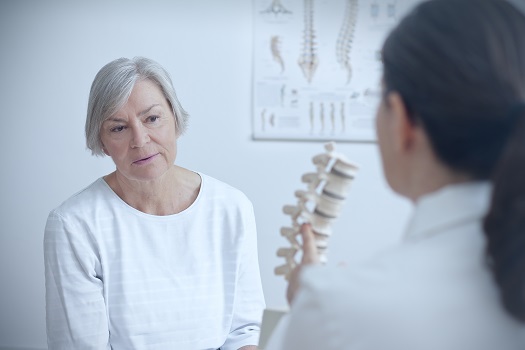
The spine is remarkably designed to handle a reasonable amount of stress throughout a person’s lifetime. While it normally does a pretty good job of achieving this goal—thanks to help from supporting soft tissues and other parts—age-related changes and added stress from various activities can wear down certain structures and contribute to a wide range of distracting symptoms. Today, we’re going to discuss how this spinal wear and tear (degeneration) impacts the entire back and what you can do about it.
Spinal Discs
The discs that cushion the spine sometimes lose height and “sponginess” over time simply due to the natural aging process. Also referred to as degenerative disc disease, this type of natural spinal degeneration can contribute to:
- Disc cracking
- Herniated or bulging discs
- Collapsed discs (if there’s severe spinal disc dehydration)
Severe disc damage may require surgical treatment such as total disc replacement. Santa Monica patients who have this type of surgery usually notice immediate pain relief and continue to see gradual improvement over the next few weeks or months.
Cartilage and Spinal Ligaments
Cartilage is the material that protects spinal joints by reducing bone-on-bone friction. It can wear down over time from natural movements or be affected by underlying issues, such as degenerative arthritis of the spine (spinal osteoarthritis). Worn cartilage can also affect certain bony spinal processes around where the vertebral arch is located.
Ligaments around the spine also naturally thicken over time, sometimes to the point where nearby structures are affected in a way that causes noticeable or ongoing discomfort. Spine-related degeneration affecting either cartilage or ligaments could also contribute to:
- The development of bone spurs
- Nerve irritation
- Spinal cord compression (if bone spurs form)
- Stiffness and pain
- Ligament tears that may affect the stability of the spine
Spinal Bones
Vertebrae are equally susceptible to degeneration. Depending on how much the spinal bones are affected, the spine’s integrity may be impacted enough to contribute to issues with:
- Spinal column shifting
- Nerve compression
- Kyphosis and similar spinal curvature disorders
Treatment and Prevention
Treatment for discomfort stemming from spinal degeneration will depend on what structures are affected. However, many patients respond well to a combination of conservative (non-surgical) treatments. With severe nerve compression or spinal instability, surgery may be necessary or recommended.
As for prevention, you can’t entirely stop your various spinal parts from being affected by some degree of degeneration. However, you can develop healthy habits that are good for your spine. Some of these include:
- Eating nutrient-rich foods
- Paying attention to your posture
- Trying not to overstress your spine
- Getting regular exercise that includes strength training
- Drinking plenty of water throughout your day
One more thing you can do to minimize the impact of spinal degeneration on your back and its supporting parts is to see your doctor on a regular basis. Seeing a doctor makes it easier to identify and treat minor problems before they become sources of serious or chronic discomfort. If there are signs of a potential problem that needs to be positively diagnosed and treated, you may be referred to a Santa Monica spine surgeon to find out what’s going on and what can be done about it. You’ll also likely receive some tips more specific to your situation.
If you have back pain you suspect may be due to spinal degeneration, call on the spinal health specialists at The Spine Institute. Our industry-leading physicians are pioneers in the use of innovative methods and cutting-edge technology to diagnose and alleviate neck and back pain. To schedule a consultation, call one of our friendly representatives today at 310-828-7757.